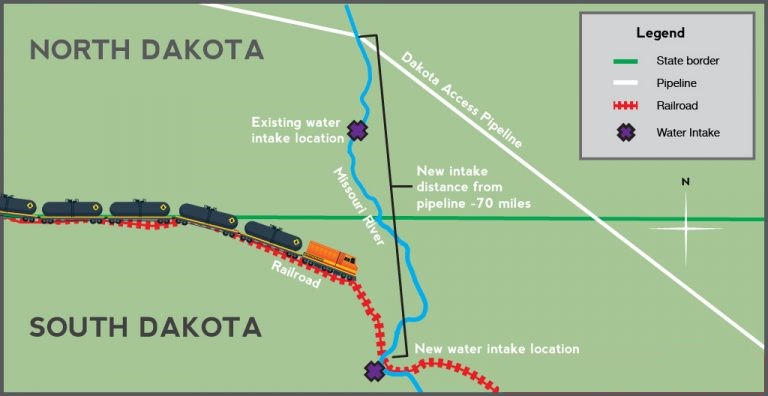CLAIM: The Standing Rock Sioux Tribe claims that the Dakota Access Pipeline threatens their drinking water supply. “The [U.S. Army Corps of Engineers] is taking our clean water and sacred places by approving this river crossing…Protecting water and our sacred places has always been at the center of our cause,” said the tribe’s former chairman, David Archambault.
RATING: False
FACT CHECK
Pipelines, according to the Pipeline and Hazardous Materials Administration, are “one of the safest and least costly ways to transport energy products” and “safely deliver trillions of cubic feet of natural gas and hundreds of billions of ton/miles of liquid petroleum products each year.”
Despite this fact, the Standing Rock Sioux Tribe maintains that the Missouri River crossing will severely threaten their communities. What the tribe doesn’t seem to want to acknowledge however is that multiple crude oil, natural gas, and refined products pipelines cross the Missouri River upstream of the Standing Rock Reservation.
Most notably is the Northern Border Pipeline which actually runs adjacent to the site where the Dakota Access Pipeline crosses the Missouri River. Built in 1982, the 1,408-mile interstate pipeline delivers natural gas from production areas in Canada and the U.S. to consumer markets in the Chicago area.
Unlike Dakota Access though, the Standing Rock Sioux Tribe didn’t subject this project to disruptive protests or lengthy litigation. In fact, a Draft Environmental Impact Statement on the pipeline explicitly notes that when solicited by Northern Border, the Standing Rock Sioux Tribe did not express any concerns about the project.
“Northern Border and Natural contacted Native American tribes to elicit any interests or concerns regarding construction of the proposed project, especially as it affects any sites of historic, cultural, or religious significance. Northern Border received responses from the Winnebago Tribe of Nebraska, the Three Affiliated Tribes of North Dakota, the Standing Rock Sioux Nation, and the Peoria Tribe of Indians of Oklahoma. The Three Affiliated Tribes expressed concern about the possible existence of archeological sites at Compressor Stations 5 and 7. No other responses expressed any concerns about the project. Natural has received no responses from Native American groups.”
Standing Rock’s narrative is further clouded by a decision to relocate its water intake facility less than two miles downstream of a railroad bridge that is known to carry large amounts of crude oil in tank cars. Statistically, pipelines are 451 times safer than rail according to the U.S. Department of Transportation, yet Standing Rock is more concerned about the Dakota Access Pipeline—located nearly 70 miles away—than it is about a railroad located within eyesight of its water intake plant.

Then there’s the Mandan Refinery, a sprawling 320 acre Marathon Petroleum complex located on the banks of the Missouri River 35 miles upstream of the Dakota Access Pipeline. Capable of processing 74,000 barrels of crude oil per day, the refinery relies on a network of transportation infrastructure to distribute refined products. This includes a 10-inch pipeline owned and operated by NuStar Energy which crosses the Missouri River before heading east to supply markets in eastern North Dakota and Minnesota.
Further upstream, pipelines including Enbridge Line 84, BakkenLink, and Kinder Morgan’s Hiland Crude Gathering System all cross the Missouri River as well.
All of these energy systems are operating safely and effectively upstream of the Standing Rock Sioux Reservation, yet none have been the subject of anywhere near the amount of scrutiny as the Dakota Access Pipeline.
